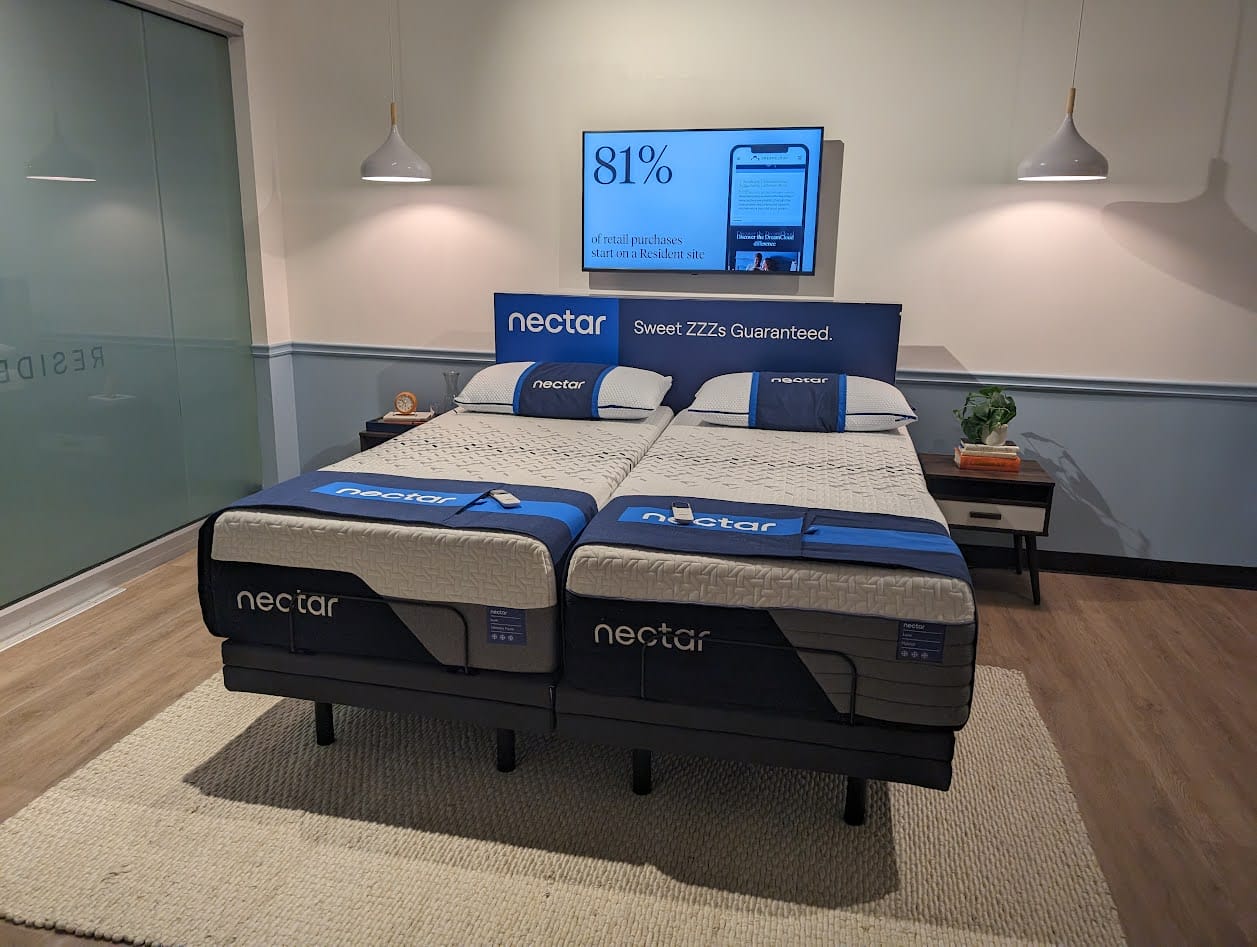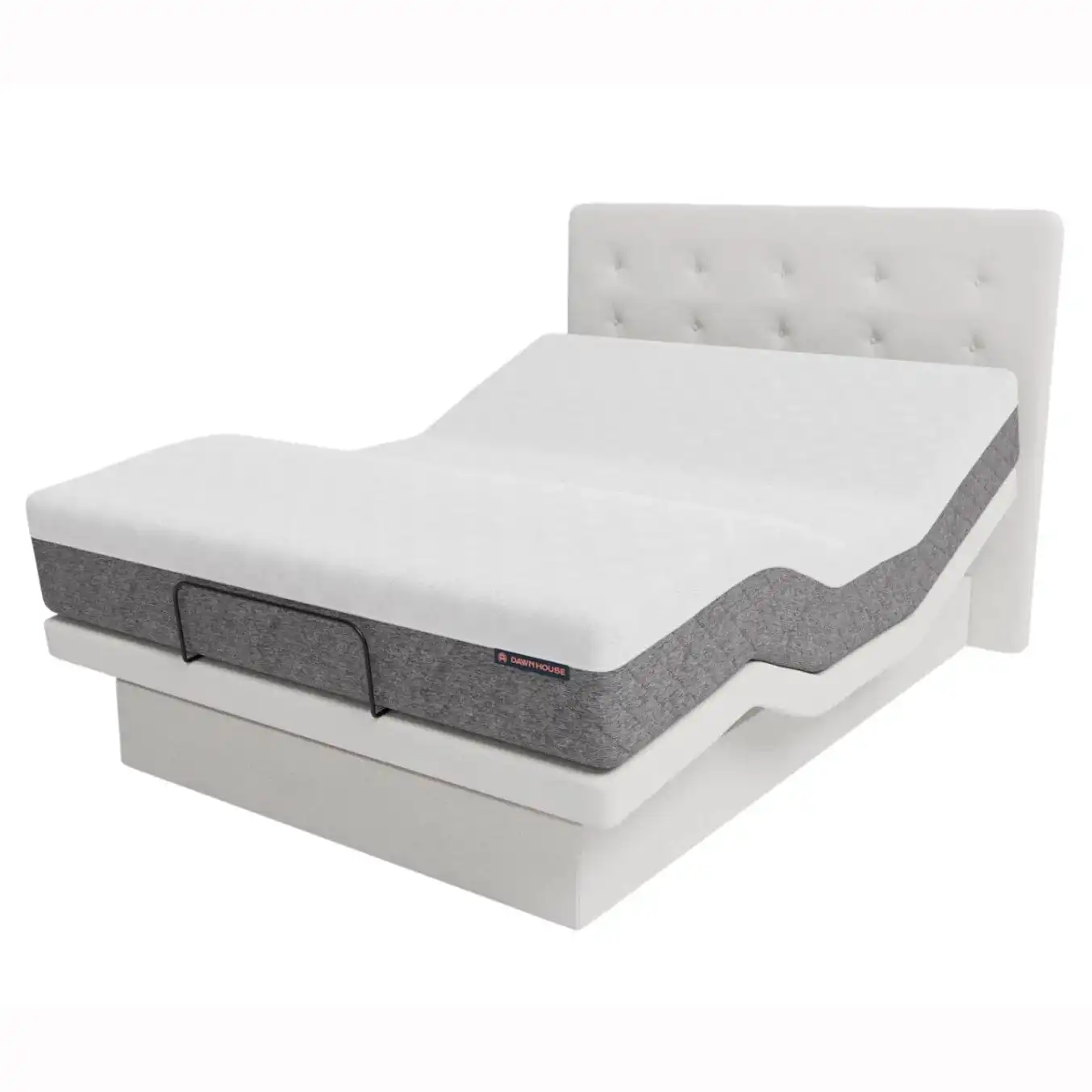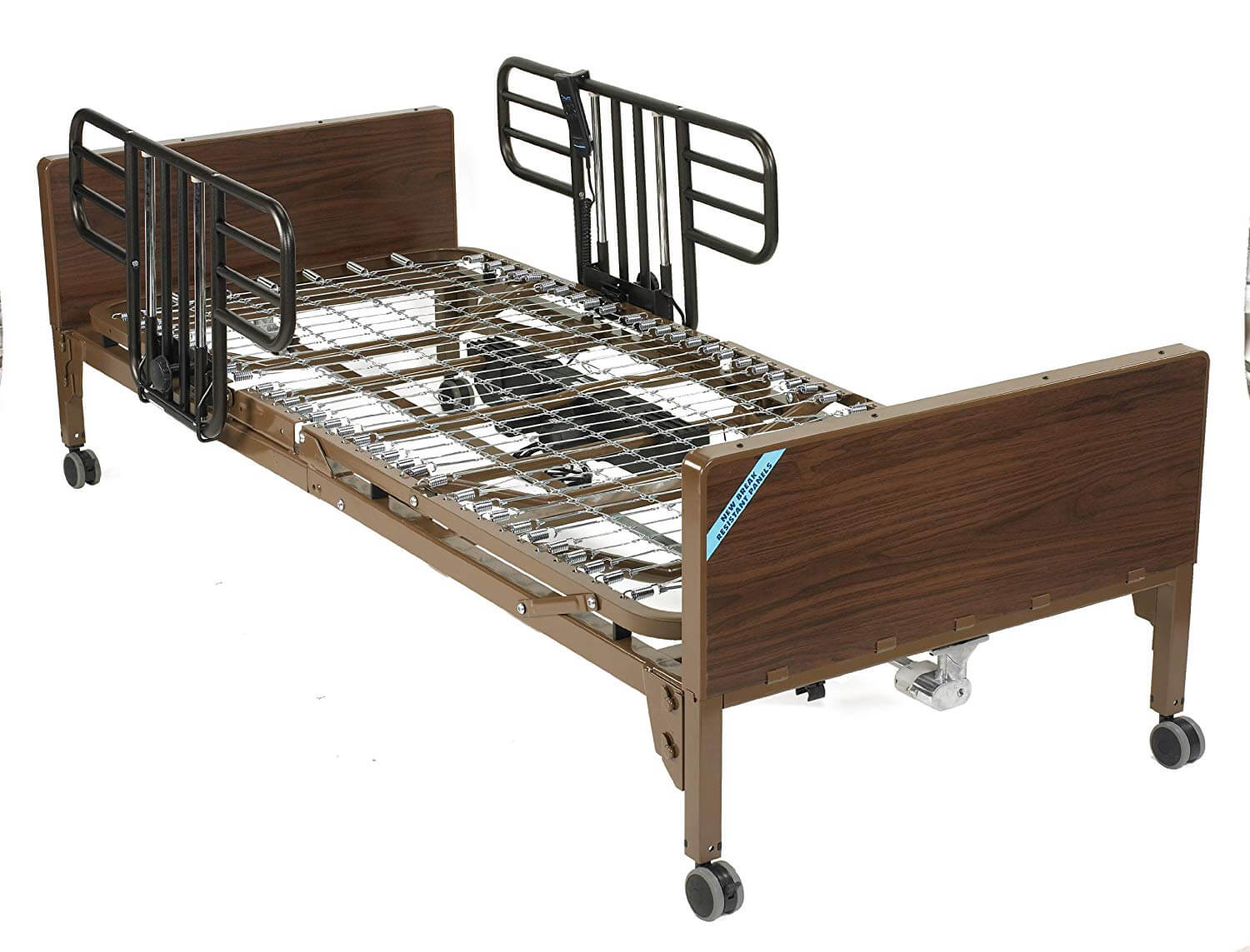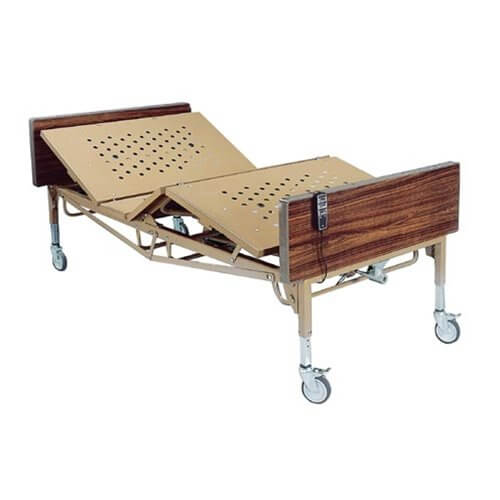Many people have special needs that require something more than a regular bed. That’s when they should be given a hospital bed. People usually purchase hospital beds for home use for sick, aging, or disabled family members. They are called hospital beds because they have all the features of the beds found in a medical facility. Hospital beds provide the same comfort right at home to those who need more than a traditional bed.
The use of hospital beds for home use has been on the rise because of the increasing number of disabled or aging people have been living at home and cared for by family members. This is done to avoid the cost of a professional caregiver or facility. Injured people also sometimes require hospital beds, especially in cases of a hip or leg fracture. Hospital beds are more expensive than a regular bed, the reason why many people choose to rent instead of buying one. But once you do not require the bed anymore, you can resell or donate it to someone who needs it. Rented hospital beds are best for those who need it for a short while. If you have a long-term requirement, purchasing a bed is more cost-effective.
If you are planning to purchase a hospital bed, in this post, we help you choose the right one.
Types of Hospital Beds
The common feature of all hospital beds is adjustability. Based on this, a number of hospital bed types are available. Each has its own adjustment options and different features and price points. Here we discuss the most popular types of hospital beds available today.
Fully-Electric Hospital Bed
This type of hospital bed is completely powered electronically and usually comes with a remote. With the help of the remote control, the height of the entire bed or different parts of it can be adjusted. Most beds also have buttons on the size of the bed in case the remote doesn’t work. With the remote control, the patient themselves can adjust the bed. In case the caregivers do not want the patient to use the remote control to maneuver the bed, the remote can be stopped using, and only the buttons on the side of the bed can be used. The buttons are only accessible by someone outside of the bed. Operating a fully electric hospital bed is very easy and effortless and can be done by anyone. Since there is no effort required in maneuvering these beds, they have a higher price tag and happen to be some of the most expensive types of hospital beds.
Semi-Electric Hospital Bed
Many people prefer to have a manual option to operate the bed, besides a remote control or buttons. In this case, a semi-electric hospital bed works great. They work mostly like the fully electric versions but in addition have a hand crank for adjusting the height of the bed. The presence of both electric and manual options together is a plus and helps in case the electronic option fail to work for any reason. However, the manual options require more effort, and that explains the slightly lower price tag. But because they also have electronic features, they are not the cheapest.
Manual hospital bed
As the name suggests, this type of hospital beds do not have any electronic features and require to be manually adjusted. Although they are the cheapest available hospital beds today, they also require a lot of effort, and cannot be operated by someone who doesn’t have the physical strength.
Low Hospital Bed
This type of hospital beds is ideal for patients who have a risk of falling down from the bed or have mobility issues and want to be able to get in and out of bed more easily. They are completely adjustable, but their overall height is much lower than other hospital beds. They usually are designed to be within a foot of the floor. The height can only be adjusted within a much smaller range. There are no manual low hospital beds, and they are almost always fully electric.
Bariatric Hospital Bed
Going by the name of the bed, they are built to support heavyweight patients. They are also fully electric and require no manual effort to adjust the bed. The weight capacity of these beds is much greater than other hospital beds, and they also have a wider mattress area. Because they are larger, heavier, and sturdier, bariatric hospital beds are more expensive than other options and usually the last resort when a regular hospital bed cannot support the weight of the patient.
Trendelenburg Hospital Bed
These beds have become popular in recent years because of the adjustment options they offer. Whether the patient is paralyzed, has mobility issues, is injured, or in therapy, the Trendelenburg bed offers the highest number of adjustment options. Besides adjusting only the height and the foot of the bed, different parts of the bed can be individually adjusted to the maximum level. For instance, the foot can be inclined to the highest level to resemble a recliner chair, and also allow zero-gravity features with the head lower than the feet. When patients use these beds, there is no need for special pillows. However, the bed also requires a greater space and needs to be put in a larger room. Among hospital beds, the Trendelenburg beds have the maximum functionality, adjustability, and fully electric features, the reason why they are also the most expensive type of hospital bed.
Are Hospital Beds Covered by Medicare?
Hospital beds are included in medical supplies. Because they are highly expensive, most people rely on health or medical insurance to purchase a hospital bed. The question is: is a hospital bed at home covered by Medicare, the most popular type of medical insurance?
Yes, Medicare does cover the purchase of hospital beds, only if you prove that you have a medical necessity that requires it. In addition, you have to be covered by Medicare Part B and also be assessed by your doctor, who must provide written documentation of your medical records and prescribe the bed for you. The supplier also has to receive the order before Medicare is billed.
You qualify for a hospital bed if you:
- Cannot change positions on a normal bed
- Cannot sleep like a regular person on a normal bed
- Cannot sleep without the head of the bed higher than 30 degrees, because of medical conditions like breathing problems, congestive heart failure, etc.
- Need to use traction attached to a bed
- Have a completed, signed and dated Certificate of Medical Necessity by your doctor
Hospital Bed vs. Adjustable Beds
Both hospital beds and adjustable beds offer customizable comfort and support to users, but they differ significantly in their primary purposes, features, and pricing. In this comparison, we’ll explore the key distinctions between the two in order to help you make an informed decision when considering your options.
Purpose:
Hospital beds are specifically designed for medical settings to cater to the needs of patients with various health conditions. They are intended to provide maximum comfort, facilitate medical treatment, and ensure ease of care for both patients and healthcare professionals.
Adjustable beds, on the other hand, are primarily designed for home use. They offer customizable comfort and support for individuals who prefer a more personalized sleep experience or require additional support due to chronic pain or other health issues. An example wold be the Puffy Adjustable Base
Features:
Hospital beds come with several unique features tailored to meet medical needs. These may include:
- Side rails for safety and support
- Electronic or manual controls for adjusting bed position
- Lockable wheels for easy mobility and stability
- Waterproof and antimicrobial mattress materials
- Optional built-in equipment such as IV poles, over-bed tables, or patient lifts
Adjustable beds typically focus on providing comfort and support for home use. Key features include:
- Remote control for adjusting bed position
- Customizable head and foot elevation
- Massage and heat settings for added relaxation
- Various mattress types, including memory foam and innerspring
- Compatibility with standard bed frames and headboards
Pricing:
Hospital beds tend to be more expensive than adjustable beds, primarily due to their specialized features and medical-grade components. Insurance coverage may offset some of the cost, depending on the individual’s medical needs and policy details.
Adjustable beds are typically more affordable and accessible for general consumers. They come in a wide range of prices, depending on factors such as brand, size, and additional features. Financing options may also be available, making adjustable beds more accessible for those on a budget.
a hospital bed and an adjustable bed is their intended use. Hospital beds are designed for medical settings and may be covered by insurance, while adjustable beds are intended for home use and may be purchased for personal comfort.
Best Hospital Bed Brands
There are many hospital bed brands available in the market, and the best one for you will depend on your specific needs and requirements. Here are some popular hospital bed brands that are known for their quality and reliability:
- Hill-Rom: Hill-Rom is a leading provider of hospital beds and other medical equipment. They offer a wide range of hospital beds, including both manual and electric models.
- Invacare: Invacare is a popular brand of hospital beds that are known for their durability and ease of use. They offer a range of bed models, including full-electric, semi-electric, and manual options.
- Stryker: Stryker is a well-known brand of hospital beds that are known for their advanced features and high-quality construction. They offer a range of bed models, including both electric and manual options.
- Joerns Healthcare: Joerns Healthcare is a popular brand of hospital beds that are designed to provide maximum comfort and support. They offer a range of bed models, including both electric and manual options.
- Drive Medical: Drive Medical is a leading provider of hospital beds that are designed to meet the needs of patients and caregivers alike. They offer a range of bed models, including both electric and manual options.
Typical Features and Costs of Hospital Beds
- Manual hospital beds: These are typically the most affordable hospital bed option, with prices ranging from around $500 to $1,500. They are manually operated and may include some basic features such as adjustable head and foot sections.
- Semi-electric hospital beds: These beds are partially electric and partially manual, with the head and foot sections being adjustable using an electric motor, while the bed height is adjusted manually. Prices for semi-electric hospital beds typically range from around $1,500 to $3,000.
- Full-electric hospital beds: These beds are fully electric, with all adjustments being made using an electric motor. They typically include a range of features such as adjustable head and foot sections, bed height adjustment, and side rails. Prices for full-electric hospital beds can range from around $2,000 to $5,000 or more, depending on the features included.
Best Hospital Beds
When you’re in the market for purchasing a hospital bed, don’t be surprised if you’re flooded with options. To help make your task easier, we have narrowed down the top five hospital beds you can buy today.
Dawn House Living
The Dawn House Living Adjustable Bed is a high-tech bed that offers a variety of features to improve your sleep and health. It has an adjustable base that can be raised or lowered, tilted, or split to create a variety of sleeping positions. The bed also has built-in health sensors that track your sleep patterns and vital signs. This data can be used to create personalized sleep recommendations and to identify potential health problems.
The Dawn House Living Adjustable Bed is available in a variety of styles and finishes to match any bedroom décor. It is also backed by a comprehensive warranty.
Here are some of the features of the Dawn House Living Adjustable Bed:
- Adjustable base: The base can be raised or lowered, tilted, or split to create a variety of sleeping positions. This can be helpful for people with back pain, circulation problems, or sleep apnea.
- Health sensors: The bed has built-in health sensors that track your sleep patterns and vital signs. This data can be used to create personalized sleep recommendations and to identify potential health problems.
- Voice control: The bed can be controlled by voice command, making it easy to adjust the position of the bed even if you’re not close to the remote control.
- Underbed lighting: The bed has underbed lighting that can be turned on and off with the remote control. This can be helpful for getting in and out of bed at night or for reading in bed.
- Wireless remote: The bed comes with a wireless remote control that makes it easy to adjust the position of the bed.
- Warranty: The bed is backed by a comprehensive warranty that covers the frame, motor, and electronics for a period of 10 years.
The Dawn House Living Adjustable Bed is a great option for people who want a comfortable and supportive bed that can help them improve their sleep and health. It is available in a variety of styles and finishes to match any bedroom décor.
Drive Medical Full Electric Ultra-Light Plus Hospital Bed
This is a fully electric bed with full or half-rails, which measures 88 inches by 36 inches, with 450-pound weight capacity and a one-year warranty. The height of the bed lowers between up to four inches off the ground, and the remote and battery backup makes sure the bed remains fully functional even during a power outage. The bed mimics the look a traditional bed with scratch-resistant wood-grain panels and a tall headboard. The head and foot boards are removable.
Lumex Patriot Semi-Electric Homecare Bed
This is a semi-electric bed that comes with both manual and electronic adjustment options. It measures 36 inches by 87 inches, has a 450-pound weight capacity and a 2-year warranty. On the downside the bed doesn’t have rails, so they have to be purchased separately. The bed can be adjusted within 15 and 24 inches, and the head and foot can be adjusted individually. The bed also has a 9-volt battery backup for emergency use during a power failure.
Drive Medical 15300BV-PKG Full Electric Bariatric Hospital Bed
This is the best fully electric bariatric bed for heavier patients. It has a heavy-duty steel build and a wider surface of 42 inches, supporting patients of up to 600 pounds. The bed comes with a mattress, and one set of rails includes a remote as well as a hand crank. It is easy to install without the need for tools. The bed blends with home décor thanks to its wood grain finish.
Hospital Bed Accessories
When considering the purchase of a hospital bed for home use, it’s essential to ensure the utmost comfort, safety, and convenience for the user. Here is a list of additional items to consider when buying a hospital bed,
Mattress Type and Quality:
- Pressure-relief mattresses: Helps prevent bedsores and pressure ulcers.
- Memory foam mattresses: Adapts to the body’s shape, providing added comfort.
- Gel-infused mattresses: Helps with temperature regulation.
Bed Rails: To provide support and safety for the patient. Ensure they are adjustable and easy to lower or raise.
Overbed Tables: Allows patients to eat, read, or do other activities while in bed.
Trapeze Bars: Helps patients to change positions, sit up, or move with minimal assistance.
Bedside Commode: Especially essential if the patient has limited mobility and can’t access the bathroom easily.
Sheets and Bedding: Consider moisture-wicking and hypoallergenic materials. Some beddings are specially designed for hospital beds.
Bed Alarm: Notifies caregivers when the patient tries to leave the bed, useful for patients with dementia or those at risk of falls.
Bed Lifts or Elevators: If the bed doesn’t come with an adjustable height feature, consider bed lifts to adjust the height.
Remote Control: Some hospital beds have wireless remote controls for easy adjustment of the bed’s various positions.
Battery Backup: In case of a power outage, having a battery backup can be crucial.
Waterproof Mattress Protectors: Protects the mattress from spills or accidents.
Pillows: Consider specialized cervical or orthopedic pillows that provide extra support and comfort.
Lamps and Lighting: Adjustable bedside lamps with a soft glow can help patients read or relax without disturbing their sleep cycle.
- Consider the room size to choose an air purifier with appropriate coverage.
- Look for ones that can remove a high percentage of particulates, including bacteria and viruses.
- Ensure the purifier has a HEPA filter for maximum efficiency.
- Consider features like quiet operation, filter replacement indicators, and energy efficiency.
- Some air purifiers also come with UV light or ionizers to neutralize pathogens.
Mobility Aids: Depending on the patient’s condition, you might need aids like wheelchairs or walkers.
Storage and Organizers: Bedside caddies or organizers can store essential items like remote controls, medications, books, or glasses within easy reach of the patient.
When purchasing any of these items, it’s important to consult with healthcare professionals to ensure they meet the patient’s specific needs and health conditions. Regular maintenance and cleaning of all equipment, especially the air purifier, are essential to maintain their efficiency and longevity.







